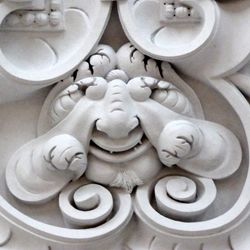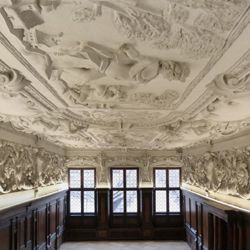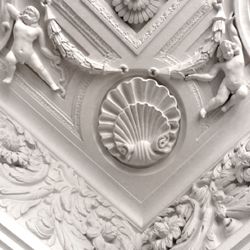Carlo
Brentano Moreti
stuccoer
born Azzano, um 1630
died Giuliano, 1684
"(...) In 1661 he crafted stuccoed works in the builders´ house , in 1662 he finished the stucco works of the ceiling, altar and pulpit of the Church of the Holy Spirit (Heilig-Geist-Kirche) in Nuremberg (which was destroyed in World War II). From April 15th 1672 he worked in the Plassenburg Castle at Kulmbach. From 1672 until the beginning of 1674 he worked as a stuccoer under the supervision of Agostino Barelli in the Theatiner Church in Munich. Signed and dated in 1674 is the ceiling that has been preserved in the foyer of the second floor in the Fembo House in Nuremberg which is considered to be his main work. The stucco works in Hertelshof (Heterl´s Court, Paniersplatz 9) in Nuremberg which were destroyed are also attributed to him. He crafted stuccoed works for the Palace Sternberg, 20 km off Benešov u Prahy/ Bohemia. From 1662 to 1665 Hans Seifert was an apprentice with him; his guarantor being Carlo Moretti Brentano´s brother, Antonio Brentano, who was staying in Nuremberg then. Another brother, the tradesman Thomas Carlo Brentano, stepped in for the stuccoer 1662/63 in a contract with the joiner Paul Albrecht Haupt and crafted the stalls for the Hospice of the Holy Spirit.(…)
Quoted from Nürnberger Künstlerlexikon, ed. by Manfred H. Grieb
Style: Baroque


